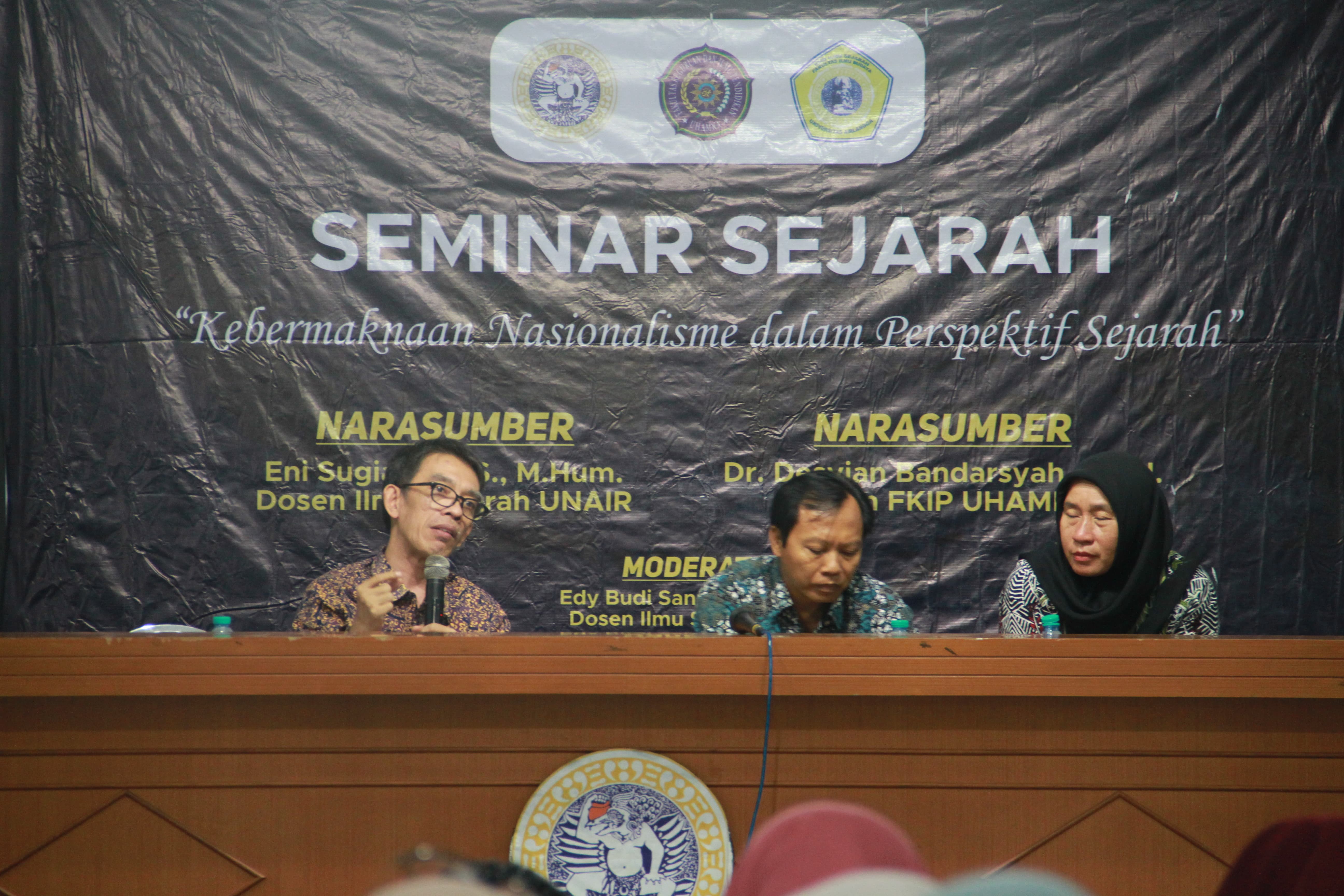UNAIR NEWS – Exploring the theme of nationalism, Department of History in Faculty of Humanities (FIB) UNAIR together with Historical Education Study Program (UHAMKA) held a historical seminar “Nationalism’s Significance in Historical Perspectives” at Siti Parwati Hall, FIB UNAIR on Monday, February 18.
In the event, two expert speakers were presented Dean of FKIP UHAMKA, Dr. Desvian Bandarsyah, M.Pd and Lecturer in History of FIB UNAIR, Eni Sugiarti, S.S., M.Hum. Both were guided by Edi Budi Santoso, S.S., M. Hum as moderator.
Refering to the information, Dean of FKIP UHAMKA, Dr. Desvian explained historical heritage of nationalism in Indonesia. According to him, the concept of nationalism that developed in Europe since 18th century spread to Asia-Africa region in early of 20th century as a form against colonialism.
Desvian said nationalism was formed from the response of Dutch colonialism which encouraged our nation to form an organizational movement with Indonesian concept.
“The national organization movement spearheaded by Budi Utomo, Indonesian National Party, Indonesian Association along with its figures of Indonesian nationalism,” Desvian said.
Meanwhile, Lecturer in History of FIB UNAIR, Eni Sugiarti delivered her material “Forming Indonesia with Sharp Pen: Press Function and Artists Role in Building Indonesian Nationalism”. According to him, nationalism roots in Indonesia is inseparable from press and artists role.
Eni continued, the press was a massive media movement carried out before Indonesia’s independence. He gave an example, there were three press media that helped the movement: Memorie Der Nouvelles, Vendu Nieuws, and Bataviashe Kolonie Courant.
Quoting from Ben Anderson’s statement, Eni said that nationalism in Indonesia was presented in various aspects, such as the making of a graveyard of heroes, cenotaph (memorial of fallen soldiers), national anthem, national flags, common language, and religious understanding.
“Things like this are called the cultural roots of nationalism,” Eni said
The lecturer in National Movement History (SPN) course added, Ben Anderson tried to show two other forms of imagery through novels and newspapers. These two things can technically display a representativeness of our nation.
“With that being said, Anderson made a conclusion to us that nationalism is something that was created and he has given a review of the past while giving a hope of the future,” Eni concluded.
Author: Fariz Ilham Rosyidi
Editor: Khefti Al Mawalia





